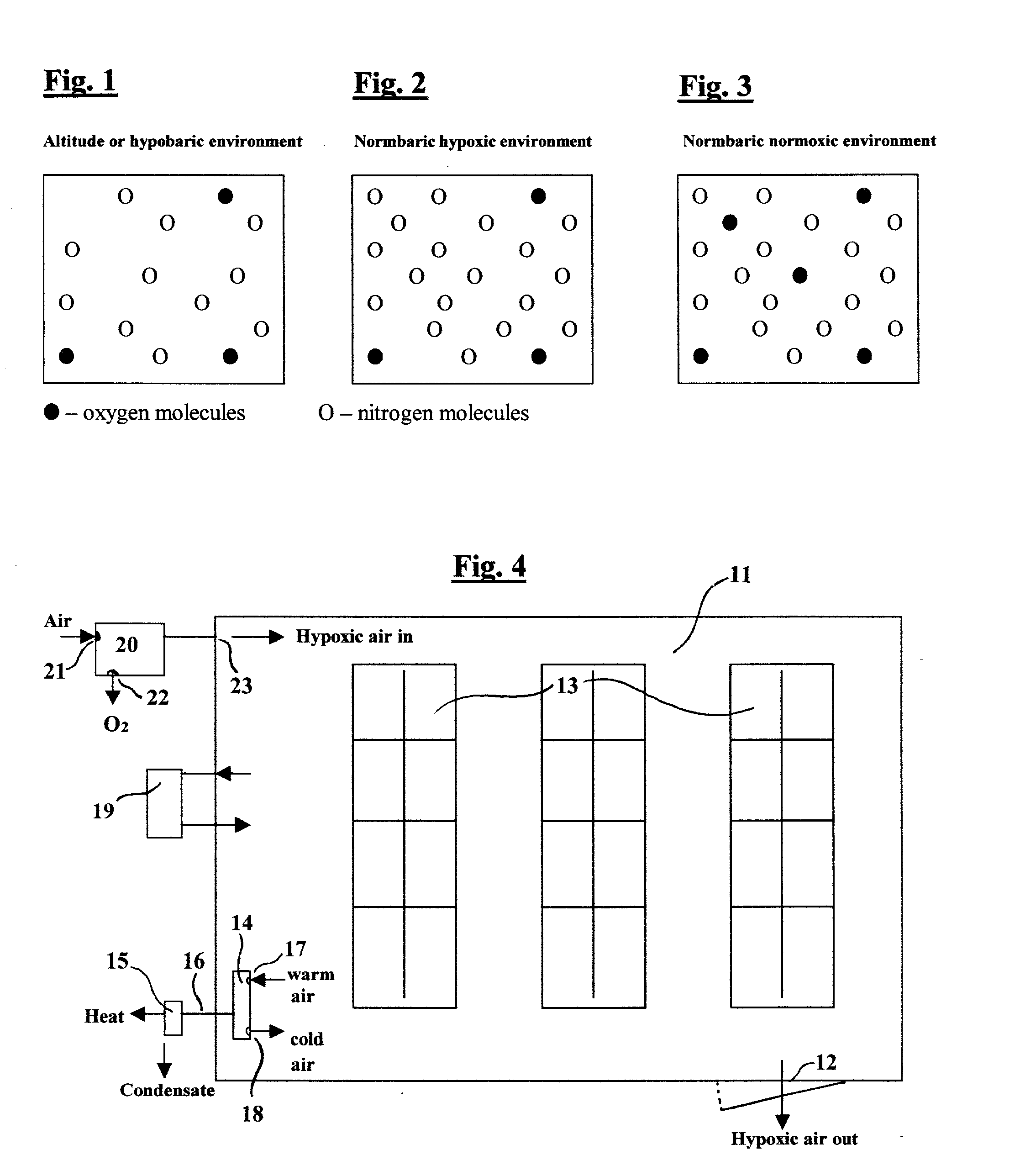Hypoxic fire prevention and fire suppression systems with breathable fire extinguishing compositions for human occupied environments
a fire extinguishing composition and breathable technology, applied in the direction of heating types, domestic cooling devices, separation processes, etc., can solve the problems of only being deployed post-combustion, ozone depletion, toxic and environmentally unfriendly,
- Summary
- Abstract
- Description
- Claims
- Application Information
AI Technical Summary
Benefits of technology
Problems solved by technology
Method used
Image
Examples
Embodiment Construction
[0081] This invention is based on a discovery made during research conducted in a Hypoxic Room System manufactured by Hypoxico Inc. The inventor discovered that that the processes of ignition and combustion in a normbaric, hypoxic environment are far different from the ignition and combustion process that occurs in a hypobaric or natural altitude environment with the same partial pressure of oxygen.
[0082] For example, air with a 4.51" (114.5 mm of mercury) partial pressure of oxygen at an altitude of 9,000' (2700 m) can easily support the burning of a candle or the ignition of paper.
[0083] However, if we create a corresponding normbaric environment with the same partial pressure of oxygen (4.51" or 114.5 mm of mercury), a candle will not burn and paper will not ignite. Even a match will be instantly extinguished after the depletion of the oxygen-carrying chemicals found at its tip. For that matter, any fire that is introduced into this normbaric, hypoxic environment is instantly ext...
PUM
 Login to View More
Login to View More Abstract
Description
Claims
Application Information
 Login to View More
Login to View More - R&D
- Intellectual Property
- Life Sciences
- Materials
- Tech Scout
- Unparalleled Data Quality
- Higher Quality Content
- 60% Fewer Hallucinations
Browse by: Latest US Patents, China's latest patents, Technical Efficacy Thesaurus, Application Domain, Technology Topic, Popular Technical Reports.
© 2025 PatSnap. All rights reserved.Legal|Privacy policy|Modern Slavery Act Transparency Statement|Sitemap|About US| Contact US: help@patsnap.com



